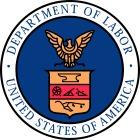Recently an article by Rebecca L. Palmer and Crystal Espinosa Buit of Lowndes, Drosdick, Doster, Kantor & Reed, P.A. regarding The Health Effects of Divorce was published in The National Law Review:
Divorces affect every aspect of an individual’s life – their financial situation, their children, their home, their friendships, everything. Divorces are notoriously stressful events and, while a stressful marriage can absolutely consume a person to their detriment, many people would also agree that their lives are negatively impacted in some way by the process. What most people may not recognize, however, is how significant a role divorce plays in their overall mental and physical health. While short term effects are generally associated with divorce, recent studies have focused on the long-term impacts to health. The findings are troubling. In a 2009 study conducted by sociologists Linda Waite and Mary Elizabeth Hughes of the University of Chicago, research showed that divorced or widowed individuals are 20 percent more likely than married people to have chronic health conditions, such as heart disease, diabetes, or cancer. In addition, they also showed 23 percent more mobility limitations, such as trouble climbing stairs or walking. The study, which examined the marital history and health indicators for 8,652 people between the ages of 51 and 61, focused on four categories: chronic health conditions, mobility, depressive symptoms and self-assessment. The results of the study support the contention that those who experience a divorce or the death of a spouse have long-term negative consequences related to their health.
University of Texas at Austin researcher Mark Hayward tells WebMD “that long-term stress before, during, and after a divorce may accelerate the biologic processes that lead to cardiovascular disease and possibly other chronic diseases.” In his study on the impact of divorce on heart disease, he showed that divorced, middle-aged women were more likely to develop heart disease than other non-divorced, married women. Although Hayward’s study focused on women, the health consequences of divorce are not specific to gender. In a 2010 article on marriage and men’s health, the Harvard Medical School cited a MFRIT study of 10,904 American married men which revealed that men who divorced were 37 percent more likely to die during the nine-year study than men who remained married. This may be due to the biological effects stress is having on men and women alike. The Harvard Medical School notes that stress triggers inflammation, which is a newly recognized cardiac risk factor. Thus, it may come as no surprise that divorced men have higher levels of inflammatory markers than married men.
Divorce also alters lifestyle habits and behaviors that may adversely affect health. Researchers from Ohio State University found that, two years after a divorce, separated partners tended to be heavier as compared to couples who remained married, although men showed larger weight gains than women. Harvard Medical School similarly points out that divorced men don’t eat as well as married men. Furthermore, divorced men are less likely to exercise and are more likely to smoke, drink excessively, and engage in other risky behaviors. It is clear that divorce may cause some people to engage in destructive conduct that inevitably affects their physical and mental well being.
There is no doubt that electing to end your marriage is a decision that should be weighed heavily. The unsettling studies on the health effects of divorce can only lead one to question why divorce has such a powerful impact on a person’s health. When discussing her research on the subject, sociologist Linda Waite noted that “previous research suggests that marriage has protective health benefits by providing financial, social, and emotional stability.” Specifically, women often have more financial security, thus allowing them access to health care and reduced stress, while married men have better health habits in comparison to single males. It also goes without saying that the stress of determining the division of marital assets and child custody directly contributes to this impact.
On the other hand, while a healthy marriage has been shown to provide protective health benefits, several studies also “show that the marriage advantage doesn’t extend to those in troubled relationships, which can leave a person far less healthy than if he or she had never married at all.” One study, for instance, showed that a stressful marriage can be as bad for the heart as a regular smoking habit. Further, just as divorce has been found to negatively impact women’s health specifically, researchers have also found that “bad relationships [are] bad for health” as women in troubled relationships (who likely face anger, stress and hostility) are more likely than other women to be depressed, have metabolic syndrome, low levels of HDL (good) cholesterol, abdominal obesity, and elevated blood sugar – “all basically steps on the road to heart attack or diabetes.”
Accordingly, it is important to remember that, while divorce has been shown to have negative impacts on health, this is not true for everyone as an unhealthy relationship can also lead to certain health problems, including physical ailments and mental depression. As researcher Mark Hayward noted, “For people in highly stressful marriages, divorce may be beneficial for their health.”
Ultimately, those seeking to prevent their current circumstances, whether a troubled marriage or divorce, from impacting their physical and mental health should seek measures to reduce stress and remember that a divorce should serve as a gateway to a healthier and happier life. When going through a divorce it is vital to remember the basics – eat well, exercise and, quite simply, remember to do the things that make you happy. Further, surrounding oneself with a supportive environment and attending counseling, if needed, will lessen health risks by helping one to cope with the stress.







